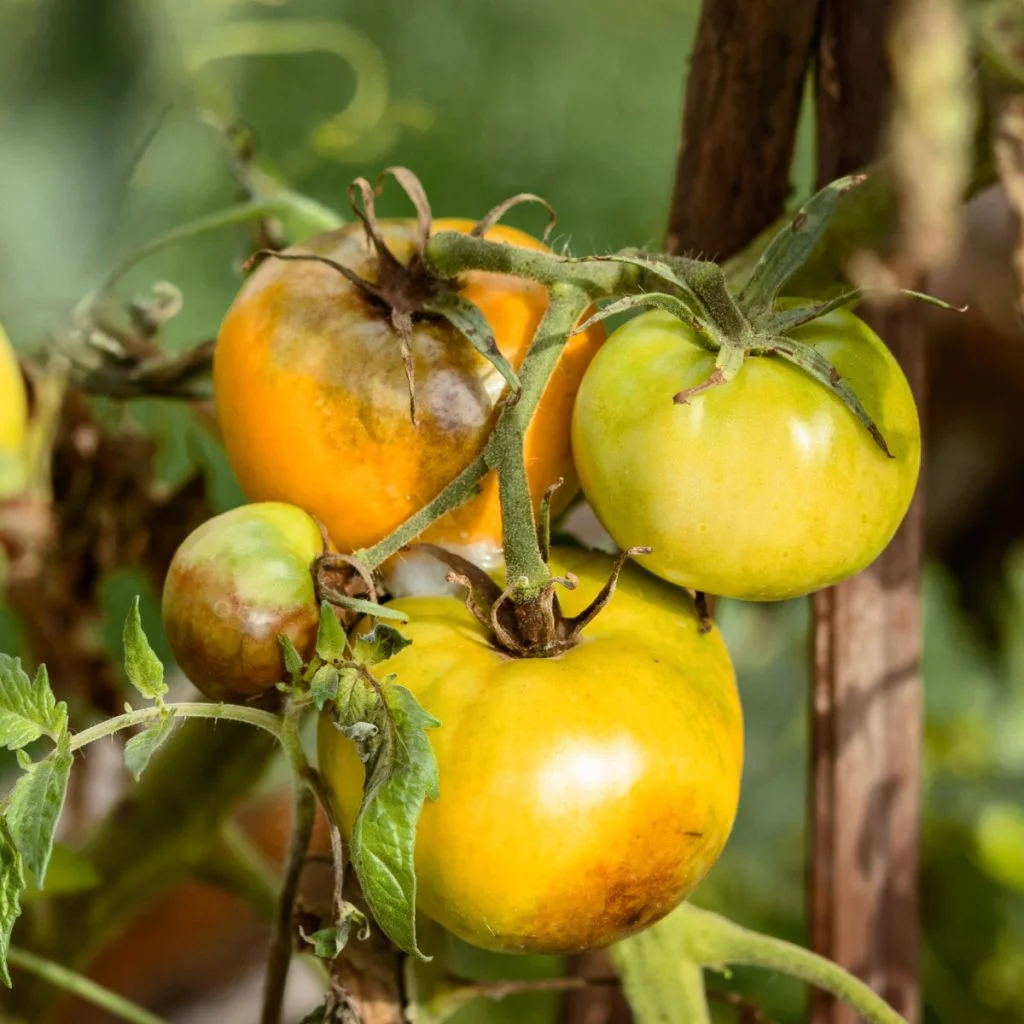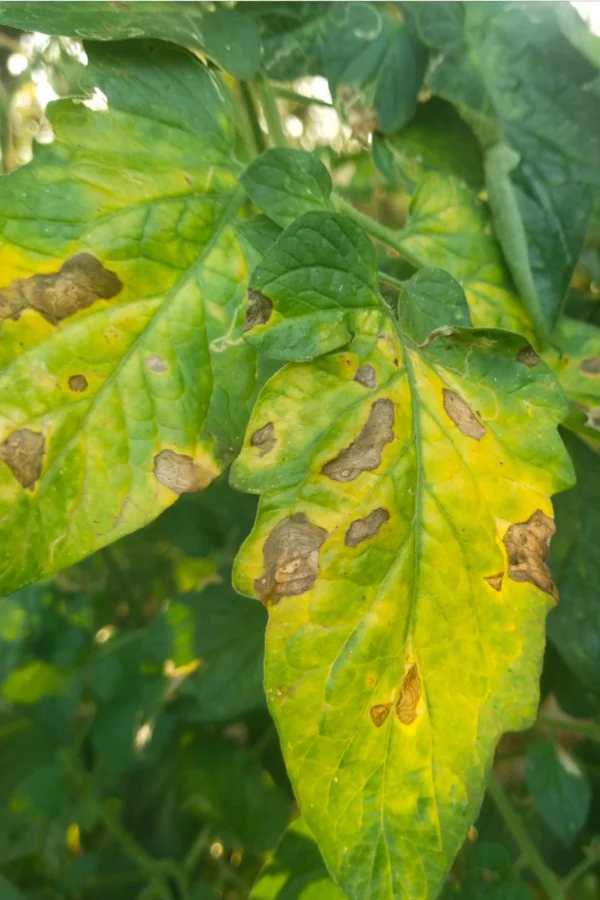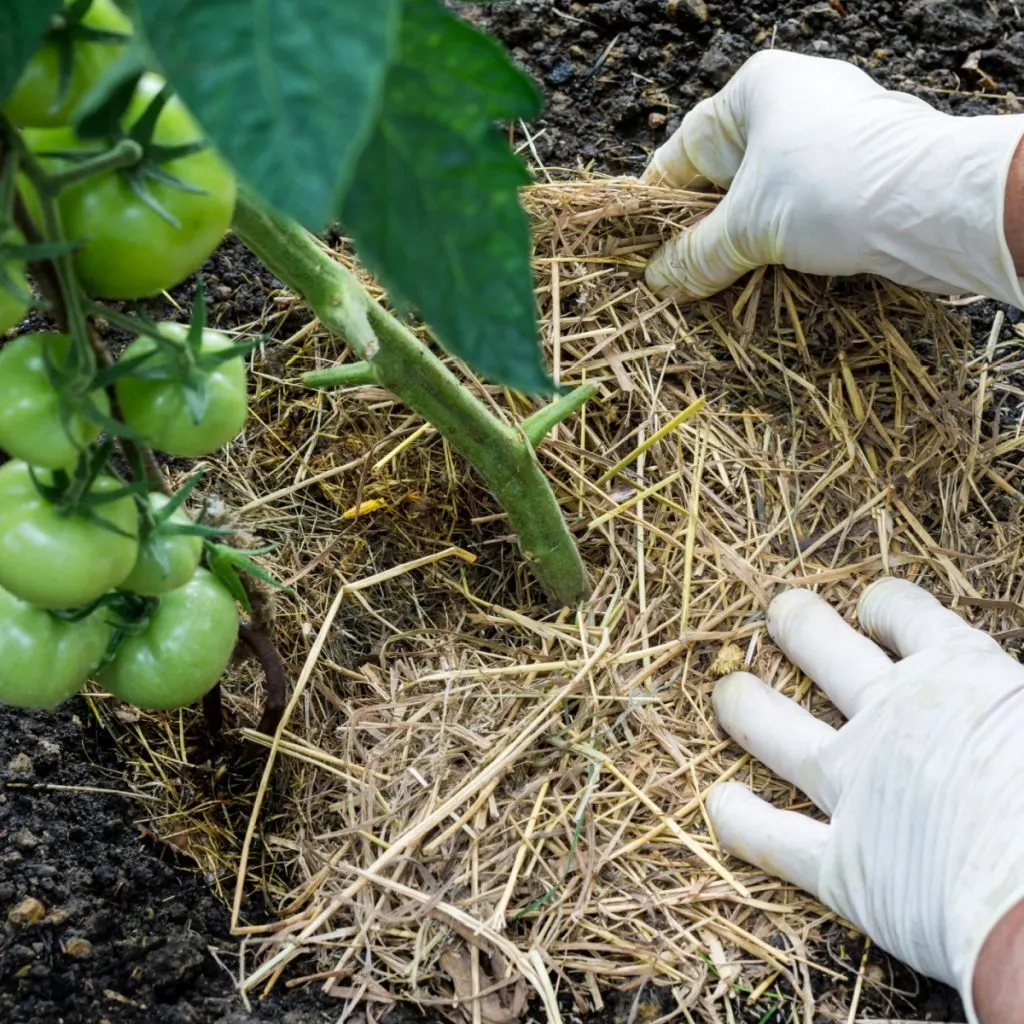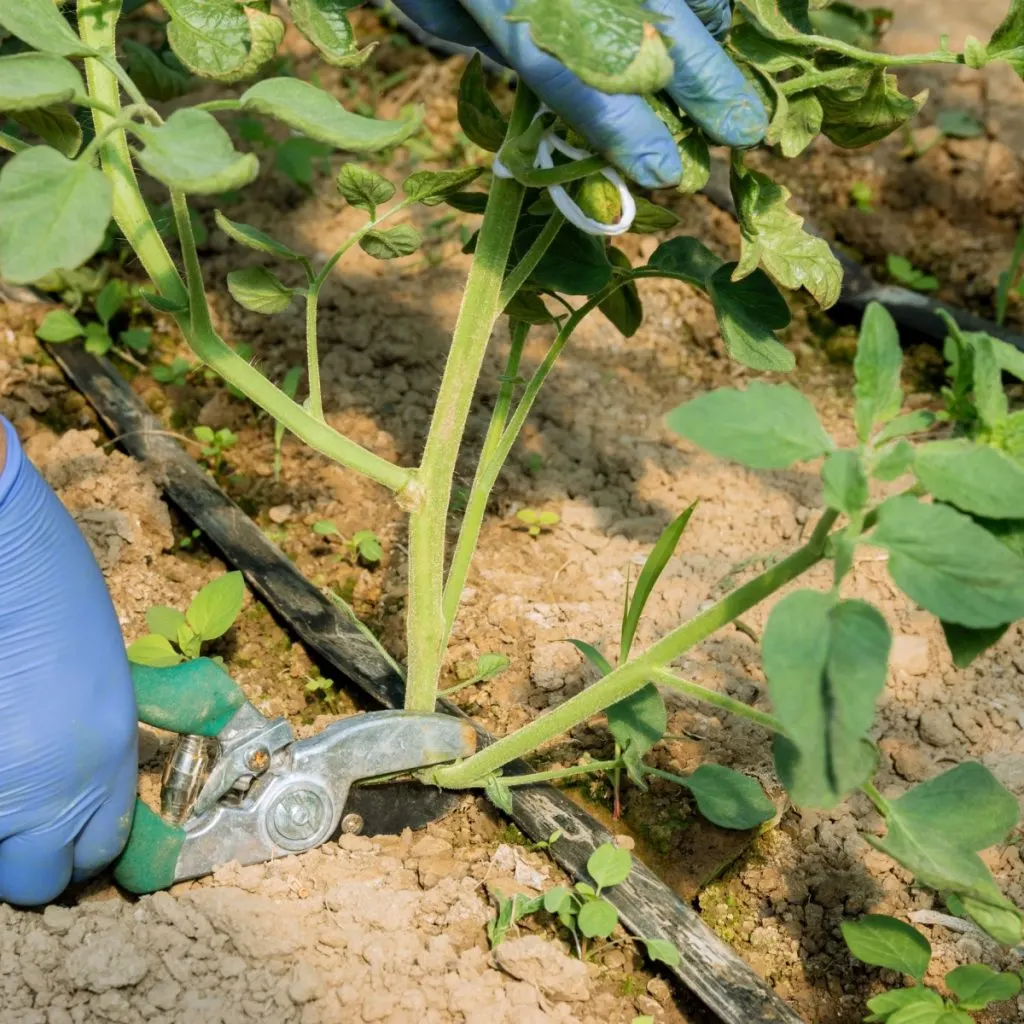Looking for a few simple tips to prevent your tomato plants from getting the deadly disease of blight this year?
Blight is one of the most frustrating and damaging issues a gardener can face when growing tomato plants. It can start out slowly with just a few dark spots on the leaves, but left unchecked, it can quickly spread and wipe out an entire plant. Unfortunately, in many cases, even the entire garden.
When blight takes hold, it affects not just the foliage, but eventually, the stems and fruit as well. The plants begin to yellow, wilt, and die back. Even if fruit is still on the vine, it usually rots or becomes inedible.

There are two main types of blight that affect tomatoes: early blight and late blight. Early blight usually appears as brown spots with with rings on leaves near the bottom of the plant. It slowly works its way up, weakening the plant over time.
Late blight is even more aggressive and deadly. It appears as large, dark spots that often show up during cool, wet conditions. Late blight can destroy an entire tomato crop in quick fashion. And with both types, once the signs appear – it’s usually too late to help your plants.
3 Secrets To Prevent Tomato Plants Getting Blight
The good news? There are a few simple but very effective things you can do to help prevent blight from ever occurring in the first place. And even better, they don’t require special sprays or chemicals. With that in mind – here are three of the easiest and most effective ways to help your tomato plants stay safe from blight.
#1 Rotate Your Tomato Crop Each Year
One of the best things you can do to reduce the chances of blight is to rotate where you plant your tomatoes. Blight spores can survive in the soil for several years, especially if infected plant debris was left behind in the garden.

Unfortunately, if you keep planting your tomatoes in the same spot year after year, those spores are already in place. And they are just waiting for a fresh tomato plant to infect!
By moving your tomato plants to a new location each year, you make it much harder for the overwintering blight spores to reach new plants. Crop rotation helps break the cycle of disease. It does this by keeping the spores from having easy access to a plant.
How Long For Rotation?
Ideally, tomatoes should not be planted in the same spot for at least three to four years. That gives time for any leftover spores to die off in the soil without a host plant to keep them alive. Raised beds can also help with rotation if you can switch the crops grown in each one from year to year.
Even a small change in location can help make a difference. Blight spores don’t move far on their own. They usually spread by wind, rain splash, or from infected tools and hands. So putting a little distance between this year’s tomatoes and last year’s spot can reduce the risk of infection greatly.
#2 Mulch Tomato Plants To Help Prevent Blight
Believe it or not, mulch is one of your best defenses against tomato blight. One of the main ways blight spreads is from spores splashing up from the soil. When it rains or when you water your garden, drops can hit the soil and bounce back up onto the lower leaves of your plants.

If blight spores are present in the soil, they can easily hitch a ride on that water. And once they do, they infect your tomato plants. But mulch can help stop this process in its tracks.
By putting mulch around your tomato plants, you create a barrier between the soil and the leaves. This stops water from splashing soil and spores onto your plant. A good layer of mulch blocks the path of infection, helping keep the plant’s lower leaves clean and dry.
The Best Mulch For Tomato Plants
Straw, shredded leaves, or grass clippings all work well as mulch. The key is to place a layer at least four to six inches thick around the base of each plant. When mulching, always try to cover the entire root zone. Just be sure to keep the mulch pulled slightly away from the main stem to avoid trapping moisture directly against it, which can lead to other issues like rot.
It’s also a great idea to include worm castings and compost in the mulch. They also help protect – and power your plants with a little dose of extra energy! Affiliate Link: 100% Brut Organic Worm Castings
Mulch also brings added benefits. It helps retain moisture in the soil, keeps weed growth down, and regulates soil temperature, all of which make for stronger and healthier tomato plants. See our article: The Best Way To Mulch Tomato Plants
#3 Prune The Bottom Of Your Tomato Plants
Last but not least, one of the easiest and most effective things you can do to prevent tomato plants from getting blight is to prune away the lower leaves and branches.

Keeping the lower portion of the plant free from foliage serves two purposes. First, it removes the leaves that are easy targets to get hit with soil splash. Second, it improves airflow around the base of the plant. This helps dry the area out faster after rain or watering. Blight loves moist, damp conditions, and the longer leaves stay wet, the more likely they are to become infected.
How Much To Prune
For determinate tomato varieties, which grow to a certain size and produce most of their fruit all at once, it’s a good idea to prune the bottom 12 inches of growth. This removes the leaves closest to the ground and limits the chance for disease to take hold.
For indeterminate tomato varieties, which continue growing and producing all season long, prune a bit more aggressively – around 12 to 18 inches from the ground up. These plants tend to get tall and bushy. But by clearing out the bottom, it helps keep them manageable and healthy.
Pruning is best done with clean, sharp garden scissors or pruners. Always sanitize your tools between plants to prevent the accidental spread of disease. After pruning, remove the leaves and stems from the garden area and don’t compost them, especially if they show any signs of disease.
In addition to helping with blight prevention, pruning also makes it easier to stake or cage your tomato plants, improves visibility, and can help direct more energy into growing fruit rather than extra foliage. It’s a small step with a big return when it comes to keeping your tomato plants healthy and productive.
By simply using the three tips of rotating where you plant, mulching beneath your plants, and pruning the lower leaves – you can and will greatly reduce the chances of blight attacking your tomato crop. And in the process. grow a bigger and better harvest!
I Grow Tomatoes
Follow Our Facebook Page For Even More Great Tomato Growing Tips! I Grow Tomatoes Facebook Page
I Grow Tomatoes is a website created for those who love all things about tomatoes – from planting and growing – to cooking and canning! We publish two articles every week, 52 weeks a year. Sign up today to follow via email! This article may contain affiliate links.
